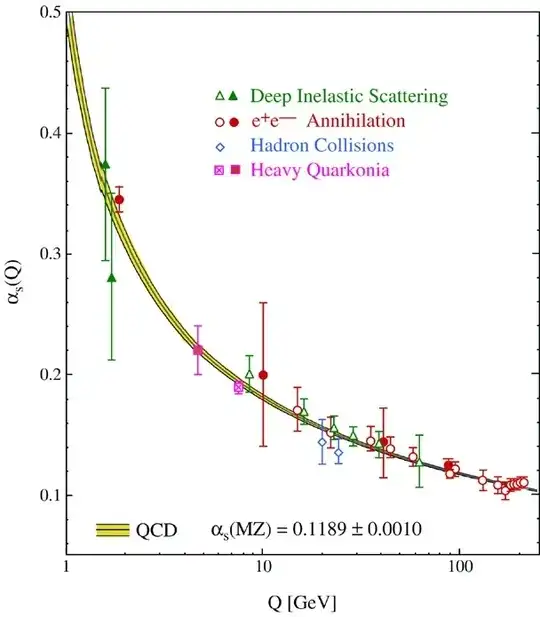It comes from the fact that momentum and positions are conjugated variables. It is best illustrated in Fourier Transform, which relates position and momentum space.
$$
\psi(p) = \int dx e^{-ipx} \psi (x).
$$
When $p\sim \frac{1}{x}$ the exponent is not suppressed. In the other cases, the exponent will oscillate, and the contribution to the integral will be much smaller. And this is the origin of a statement "small distance equals large momentum."
Consider an example; electron 1S wave function in hydrogen is
$$
\psi(r) \sim e^{-m \alpha r}.
$$
The size of hydrogen is $r\sim \frac{1}{\alpha m}$. So to probe hydrogen we should use $p\sim 1/r \sim \alpha m$. Indeed, with
$$
\psi(p) \sim \frac{1}{(p^2+m^2\alpha^2)^2}.
$$
probability to find momentum in region $[p,p+\Delta p]$ is proportional to
$$
p^2 \psi(p)^2 \Delta p
$$
which has a peak for $p\sim m\alpha$.
Note that in your question you talk about high momentum transfer, not about high momentum uncertainty. Consider an example of scattering electron with momentum $p$ on a proton. For simplicity, I will consider electron, photon, and proton to be spin 0 particles. The amplitude is
$$
\mathcal{M} = (ie)^2\frac{i}{q^2}F(q^2)
$$
with the momentum transfer $q=p'-p$. $F(q^2)$ is proton charge distribution function, $F(0)=1$. When you measure the differential cross-section $\frac{d\sigma}{dq^2}$ you probe the form-factor at a certain value of the momentum transfer. Note that $q$ is defined by external kinematics, $q^2=(p'-p)^2=2m_e^2-2p\cdot p'$.
By Fourier transforming $F(q^2)$ you obtain charge distribution in position space - the charge density. In practice, you only know $F(q^2)$ in a certain range of $q^2$. Then, $1/q^2$ is the smallest structure you can resolve in position space. Fourier transform of $F$ is directly related to the wavefunction in position space.
On the other hand, this example is illustrative, because the off-shell propagator $\frac{i}{q^2}$ gives you an effective range of interactions. When a particle is off-shell, then it can propagate only over a short distance $\Delta x\sim \frac{1}{\Delta Q}$. This comes again from the properties of the Furier transform.
It is only partially related to the uncertainty principle. High momentum can still have large uncertainty, but you want also
$$\Delta p \ll p$$ because only then the measurement is precise. In other words;
$$
\Delta x \Delta p \ge \hbar/2
$$
holds always, but when
$$
\Delta x \Delta p \sim \hbar/2,
$$
then the measurement is most precise for fixed $p$ and $x$. So you minimize also $\frac{\Delta p}{p}$ at given $\Delta x$ and $x$.
